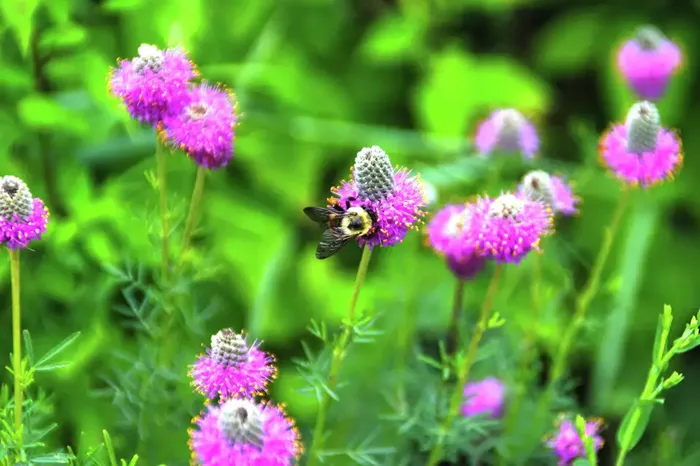Gardening with Native Plants: Benefits and Tips.
More gardeners are choosing to add native plants to their landscapes. These plants offer more than just beautiful flowers. They also support pollinators and beneficial insects, while providing food and shelter for songbirds, toads, and other wildlife.
Native plants play a crucial role in improving our soil and managing stormwater. Their deep roots slow down stormwater runoff and help direct it into the ground. This process allows water to reach the groundwater below. Additionally, these roots break up compacted clay soils.
Legumes like blue false indigo (Baptisia australis), which grow well in zones 3 to 10, add nitrogen to the soil and support various pollinators.
If you have a shady garden, consider woodland native plants. Tall black cohosh (Actaea racemosa) grows 4 to 6 feet tall and has white flowers in summer. It is also a host plant for the Appalachian azure butterfly. The spring-blooming native columbine (Aquilegia canadensis) features red and yellow flowers that attract hummingbirds and long-tongued insects. Wild ginger (Asarum canadense) makes an excellent groundcover, thriving against garlic mustard and other invasive plants.
Some people may hesitate to add native plants to their landscape. They might worry that these plants won’t match their current design or be accepted by neighbors. A good approach is to introduce native plants gradually, one at a time.
Always ensure that the plants you choose fit the growing conditions, your garden design, and the available space. Some native plants are aggressive and need room to grow, while others grow in clumps and expand slowly, making them suitable for smaller yards.
Common milkweed (Asclepias syriaca) is a beloved but aggressive native plant for monarch caterpillars. It spreads through seeds and deep rhizomes, making it hard to control. If space is limited, consider less aggressive native milkweeds that still support monarchs. Butterfly weed (Asclepias tuberosa), hardy in zones 3 to 10, is a great choice for sunny, well-drained areas. Red milkweed, also known as swamp milkweed (Asclepias incarnata), thrives in full sun and tolerates moist soil.
When adding native plants to your garden, think about substitutions. If a plant dies, look for a native plant to replace it, ideally one with a similar growth habit, texture, and bloom time. Prairie dropseed (Sporobolus heterolepsis) is a North American native grass that resembles ornamental fountain grass (Pennisetum) and offers many benefits. Hardy in zones 3 to 8, it has fragrant flowers in late summer, golden fall color, and seeds that shine like gems when covered with ice in winter. This elegant grass serves as a host plant for six different moths and butterflies, making it a versatile addition to any garden style.
As you learn more about the native plants in your region and gain experience in adding them to your gardens, you may want to create gardens filled entirely with native plants. Look to nature for inspiration. Combine plants that complement each other and have similar growing conditions.
Mixing aggressive plants with timid ones can lead to a garden dominated by just one or two overly assertive plants.
Always do your research first. Visit local nature centers and speak with others who grow native plants to gather information and ideas.
As you achieve success and build confidence, you will find creative ways to incorporate these beautiful plants into your landscape.
Related topics:


